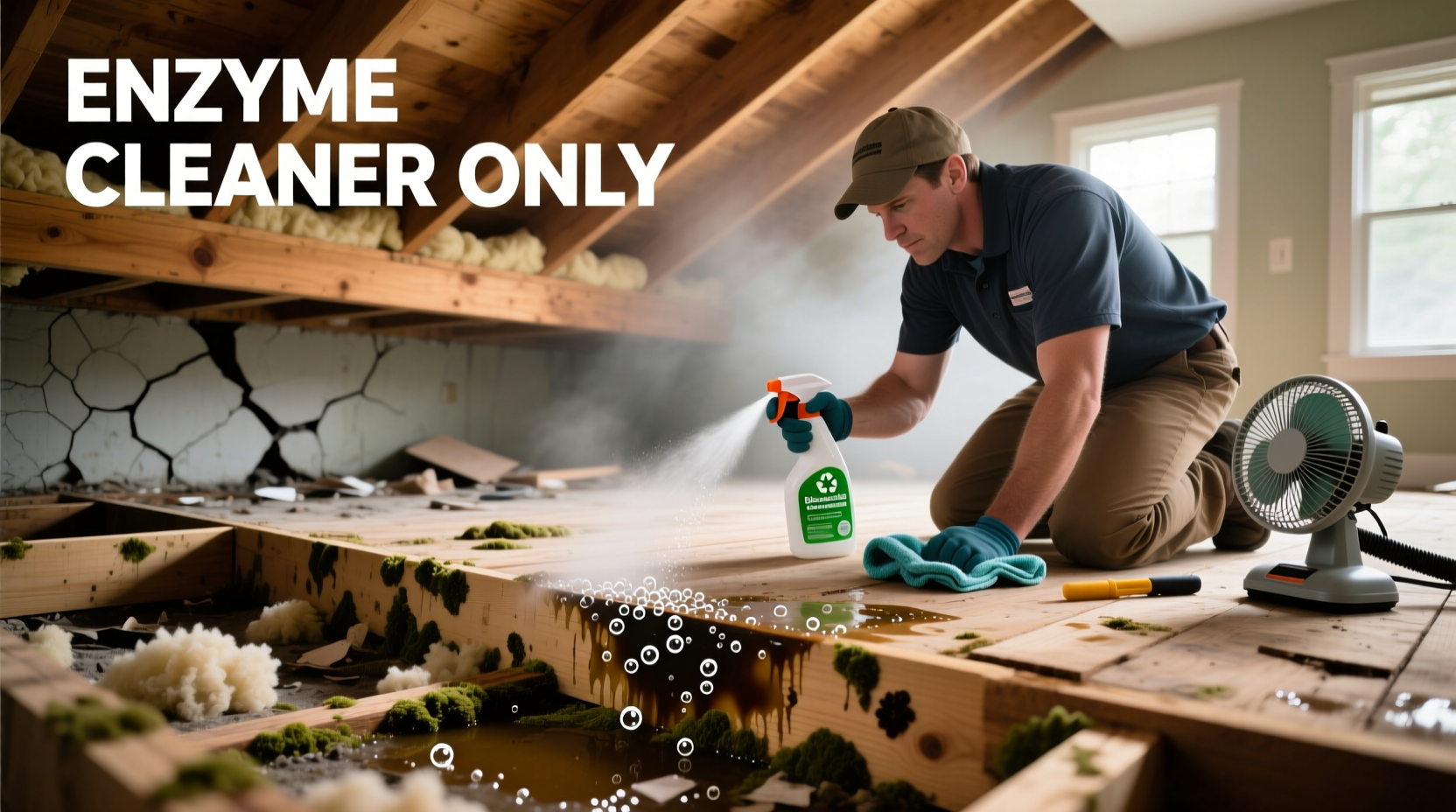Dealing with cat urine beneath your home is more than just a nuisance—it can become a serious health and structural concern if left unaddressed. Whether your pet has been using crawl spaces as an unintended litter box or feral cats have taken up residence, the ammonia-rich waste seeps into wood, insulation, and soil, creating persistent odors and potential mold growth. The key to long-term success lies not in masking smells, but in fully neutralizing biological contaminants at their source. This guide outlines proven strategies backed by environmental hygiene experts, including step-by-step cleaning protocols, odor elimination techniques, and preventive measures.
Understanding the Challenge of Subfloor Cat Urine

Cat urine contains urea, creatinine, uric acid, and pheromones. When deposited in enclosed areas like crawl spaces, the uric acid crystallizes upon drying and reactivates when exposed to moisture—especially during humid seasons. This explains why odors often return months after initial cleanup attempts. Unlike surface stains on carpets, subfloor contamination involves porous materials such as wooden joists, vapor barriers, and insulation, which absorb liquids deeply. Without proper treatment, these residues continue off-gassing ammonia, attracting more animals and compromising indoor air quality.
“Urine that penetrates below floorboards creates a reservoir of volatile organic compounds. Surface sprays won’t reach it—only mechanical removal and enzymatic breakdown work.” — Dr. Linda Reeves, Environmental Hygienist, National Indoor Air Quality Council
Step-by-Step Guide to Removing Cat Urine from Under the House
Effective remediation requires access, assessment, cleaning, and protection. Follow this timeline-based approach for lasting results:
- Inspect and Isolate (Day 1): Enter the crawl space with protective gear (N95 mask, gloves, goggles). Use a blacklight flashlight to detect dried urine spots—these will fluoresce under UV light. Mark affected zones with flag tape.
- Ventilate the Area (Day 1–2): Install temporary exhaust fans to pull fresh air through the space. Run them continuously for at least 48 hours before cleaning to reduce airborne ammonia.
- Remove Contaminated Materials (Day 3): Excise soaked insulation, damaged vapor barriers, and any wood showing warping or dark staining. Double-bag waste in sealed plastic and dispose of it properly.
- Clean Structural Elements (Day 4): Spray exposed wood and concrete with an enzymatic cleaner formulated for pet urine. Allow full dwell time (typically 10–15 minutes), then scrub with a stiff brush. Rinse only if product instructions allow; most enzyme solutions require air drying.
- Neutralize Odor Residues (Day 5): Apply an odor counteractant containing hydrogen peroxide and surfactants. These break down uric acid crystals chemically. Avoid chlorine bleach—it reacts with ammonia to form toxic chloramine gas.
- Reinstate Barriers (Day 6–7): Replace insulation with pest-resistant mineral wool and lay new 6-mil polyethylene sheeting over the ground to inhibit future moisture absorption.
Do’s and Don’ts of Crawl Space Cleanup
| Action | Recommendation | Reason |
|---|---|---|
| Use enzymatic cleaners | ✅ Do | Break down uric acid biologically without harsh chemicals |
| Apply heat lamps to dry area | ❌ Don’t | Can bake odor into wood and create fire hazards |
| Wear PPE | ✅ Do | Protects against mold spores, dust mites, and ammonia exposure |
| Mix cleaning agents | ❌ Don’t | Risk of dangerous chemical reactions (e.g., bleach + vinegar = chlorine gas) |
| Seal entry points post-cleanup | ✅ Do | Prevents re-infestation by stray or neighborhood cats |
Real-World Case: Eliminating Recurring Odors in a Pacific Northwest Home
A homeowner in Portland reported strong cat odors resurfacing each spring despite repeated carpet cleaning. A crawl space inspection revealed a colony of feral kittens had lived under the house the previous winter. Over 12 linear feet of fiberglass insulation was saturated, and wooden floor joists showed visible crystallization. The contractor removed all compromised insulation, applied a commercial-grade enzyme solution (containing protease and urease enzymes), and installed rigid foam board insulation with a metal mesh barrier. After six weeks of continuous ventilation, follow-up air quality tests showed a 94% reduction in volatile organic compounds. The family reported no odor recurrence over the next two years.
Essential Checklist for Complete Odor Elimination
- ✔ Conduct a full crawl space inspection using UV lighting
- ✔ Install temporary ventilation fans for at least 48 hours
- ✔ Remove and replace contaminated insulation and vapor barriers
- ✔ Clean all exposed wood and concrete with enzymatic solution
- ✔ Apply odor-neutralizing agent targeting uric acid crystals
- ✔ Seal all animal entry points (gaps larger than 2 inches)
- ✔ Monitor humidity levels; aim to keep below 55%
- ✔ Schedule a follow-up inspection after 30 days
Frequently Asked Questions
Can I use household vinegar to clean cat urine under my house?
Vinegar may temporarily reduce odor due to its acidity, but it does not destroy uric acid crystals. In damp environments, vinegar can even feed microbial growth. Enzymatic cleaners are far more effective for permanent removal.
How long does it take for the smell to go away after cleanup?
If treated correctly, noticeable odor reduction occurs within 3–5 days. Complete dissipation typically takes 2–4 weeks, depending on ventilation, humidity, and the extent of contamination. Persistent smells suggest missed contamination zones or inadequate product dwell time.
Will sealing the crawl space prevent future issues?
Encapsulation—installing a sealed vapor barrier, insulating walls, and conditioning the air—significantly reduces the risk of biological contamination. However, physical exclusion (securing vents and foundation gaps) remains essential to prevent animal access.
Conclusion: Restore Cleanliness and Peace of Mind
Removing cat urine from beneath your home isn’t just about comfort—it’s about protecting your indoor environment and maintaining structural integrity. Success depends on thoroughness: identifying every trace of contamination, using biologically active cleaning agents, and preventing re-entry. While DIY efforts can resolve minor cases, extensive infestations may require professional remediation services equipped with industrial extraction tools and air filtration units. The effort invested today pays dividends in air quality, property value, and peace of mind.









 浙公网安备
33010002000092号
浙公网安备
33010002000092号 浙B2-20120091-4
浙B2-20120091-4
Comments
No comments yet. Why don't you start the discussion?